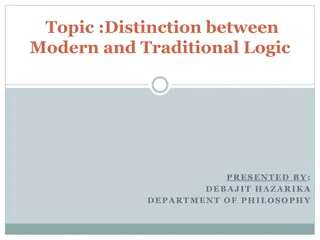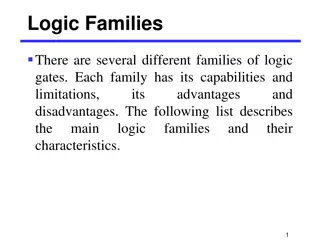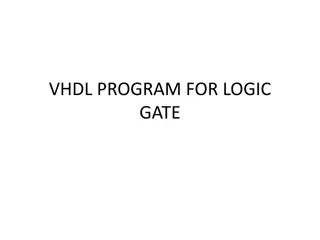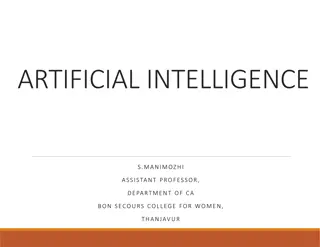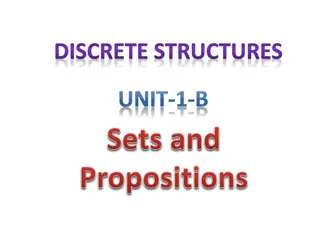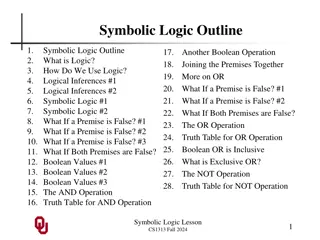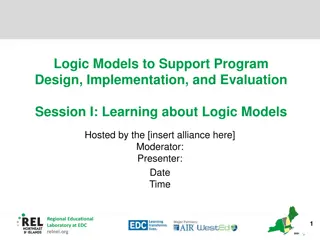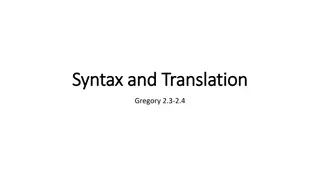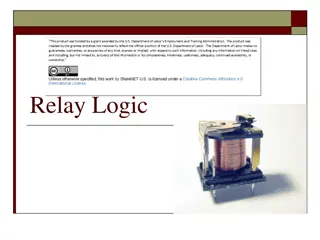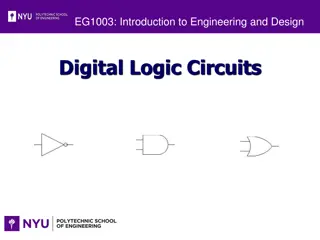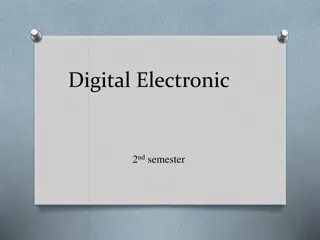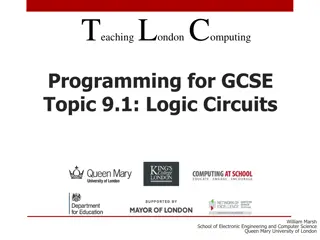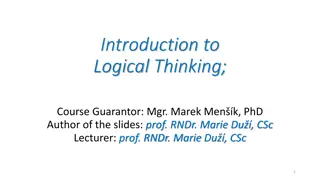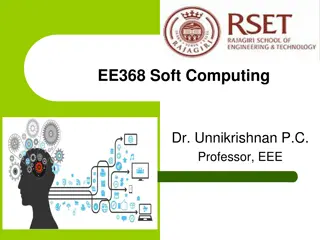Overview of Monotonic and Nonmonotonic Logic
Monotonic logic relies on unchangeable facts, while nonmonotonic logic allows for fluid conclusions based on new information. Explore their differences, real-life applications, and handling exceptions in this informative overview.
Download Presentation

Please find below an Image/Link to download the presentation.
The content on the website is provided AS IS for your information and personal use only. It may not be sold, licensed, or shared on other websites without obtaining consent from the author.If you encounter any issues during the download, it is possible that the publisher has removed the file from their server.
You are allowed to download the files provided on this website for personal or commercial use, subject to the condition that they are used lawfully. All files are the property of their respective owners.
The content on the website is provided AS IS for your information and personal use only. It may not be sold, licensed, or shared on other websites without obtaining consent from the author.
E N D
Presentation Transcript
OVERVIEW Monotonic Logic Monotonic Logic Nonmonotonic Nonmonotonic Logic Logic Usage and Applications Usage and Applications Comparison with other forms of logic Comparison with other forms of logic Related Topics Related Topics Summary Summary
MONOTONIC LOGIC Standard type of logic Standard type of logic If proven true, will be true forever Facts provided can t be modified Doesn t always fit in real life. Doesn t always fit in real life. Sidra is in Doha and Doha is in Qatar, so Sidra is in Qatar. Sidra can always take a trip to United States
NONMONOTONIC LOGIC New facts can be added New facts can be added Current facts can be modified Current facts can be modified Conclusion can change Conclusion can change If A B before new fact Conclusion might change after new fact
EXAMPLE Consider the following example Consider the following example All balls bounce Football is a ball Does football bounce Of course? Of course? What about a football with no air filled in? Conclusions change with new facts Conclusions change with new facts
REAL LIFE USAGE Used in artificial intelligent systems Used in artificial intelligent systems For its adaptability Adding, removing and modifying facts To reach appropriate conclusions for appropriate scenarios
APPLICATION Consider an example that can t be handled by monotonic logic Consider an example that can t be handled by monotonic logic Birds can fly Seems logical, right? Seems logical, right?
EXCEPTIONS? What about exceptions? What about exceptions? Ostrich, Penguins
EXCEPTIONS Bird(x) Flies(x) Bird(x) Flies(x) How to handle exceptions? How to handle exceptions? Bird(x) Abnormal(x) Flies(x) Through Through nonmonotonic nonmonotonic logic, we handle exceptions logic, we handle exceptions
HANDLING EXCEPTIONS We know We know Ostrich(x) Abnormal(x) Ostrich is not a normal bird We conclude We conclude Ostrich(x) Bird(x) Flies(x) We make all exceptions this way We make all exceptions this way
SPECIFYING DEFAULTS Monotonic logic has formal systems to handle defaults Monotonic logic has formal systems to handle defaults Defaults: Known facts and rules Nonmonotonic Nonmonotonic logic uses incomplete and uncertain information to form patterns for logic uses incomplete and uncertain information to form patterns for decision making decision making Abduction: Interpretation of the rules and facts.
REASONING Default logic Default logic The predicate logic used as set of inferences Modal Operator Modal Operator - - consistent with known facts consistent with known facts x,y: A(x,y) B(x,y) C (x,y) Here B(x,y) is the Modal Operator
ABDUCTION For a given fact For a given fact A(x) B(x) and A(x) is sufficient for B(x) Although, A(x) is not required for B(x)
INHERITANCE DIAGRAM Flying Things Ostriches Birds Alma Jack
COMPARISON WITH PROBABILITY Nomonontonic Nomonontonic logic isn t compatible with probability logic isn t compatible with probability The uncertainty and addition of facts disturb the probability model. The uncertainty and addition of facts disturb the probability model.
COMPARISON WITH CLASSICAL LOGIC Always results in a conclusion Always results in a conclusion Classical logic might loop forever with incomplete information Classical logic might loop forever with incomplete information Would return wrong answer, instead of none. Would return wrong answer, instead of none.
RELATED TOPICS Modal Logic Modal Logic Modelling reasoning about knowledge, actions or time Epistemic Logic Epistemic Logic Uses modal logic to reason about knowledge Deontic Logic Deontic Logic The representation of normative knowledge
SUMMARY Adapts with addition, removal and modification of new facts. Adapts with addition, removal and modification of new facts. Handling exceptions Handling exceptions Used in artificial intelligence for decision making purposes Used in artificial intelligence for decision making purposes Helpful where predicate or classic logic falls short Helpful where predicate or classic logic falls short


